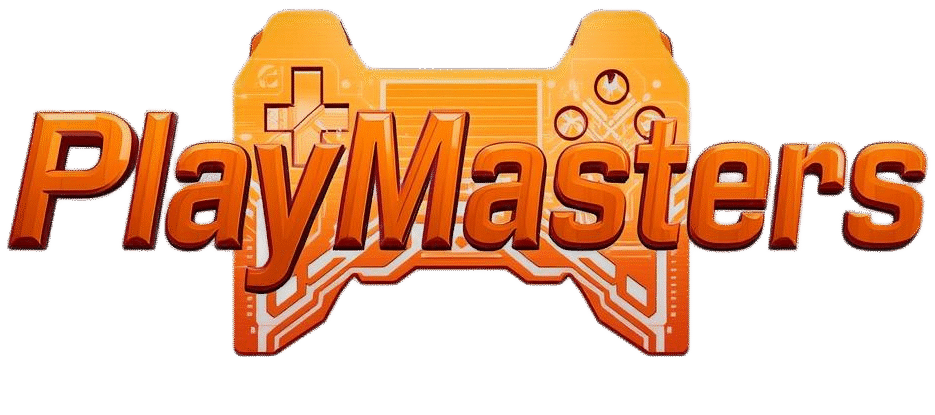Games have been an integral part of human civilization since the beginning of time. From ancient board games carved into stone to the latest high-definition virtual reality experiences, the concept of gaming has continuously evolved. Games have entertained, educated, and connected people from all walks of life. They have grown from simple activities of leisure into a global phenomenon that influences culture, technology, education, and even psychology. In this blog, we will explore the vast world of games — their history, evolution, importance, impact, and the reasons why they continue to hold such a special place in our lives.
The Origins of Games
The history of games can be traced back thousands of years. Long before video games or sports stadiums, ancient civilizations played simple yet meaningful games. Archaeologists have discovered gaming artifacts dating as far back as 5000 BCE. Games like Senet in ancient Egypt, Go in China, and Mancala in Africa were not just forms of entertainment but also had spiritual, educational, and social significance.
Senet, for example, was believed to represent the journey of the soul to the afterlife. Similarly, Go, which originated in China over 2,500 years ago, was considered a game of strategy and intellect, played by scholars and warriors alike. These early games reveal that humans have always been fascinated by challenge, strategy, and the joy of competition.
As time progressed, games became more structured and diverse. Card games, dice games, and physical competitions began to appear across cultures. By the Middle Ages, chess became a symbol of intelligence and nobility, while outdoor games like archery and wrestling became part of local traditions. Each society developed its own form of play, shaping the identity and social life of its people.
The Birth of Modern Games
The 19th and early 20th centuries marked a significant turning point in gaming history. With industrialization and the growth of leisure time, new forms of entertainment emerged. Board games became popular in households across Europe and America. Games like Monopoly, Scrabble, and Clue became classics, teaching players about business, language, and deduction in fun and engaging ways.
Simultaneously, sports evolved into organized competitions. Football, cricket, tennis, and basketball were codified with official rules, leading to the formation of leagues and international tournaments. Sports became not only a pastime but also a form of professional entertainment and national pride.
This era also witnessed the birth of mechanical and arcade games. Pinball machines, coin-operated shooting galleries, and mechanical racing games introduced people to interactive entertainment. These innovations laid the groundwork for what would soon become a technological revolution: the era of digital gaming.
The Rise of Video Games
The 1970s and 1980s are often regarded as the golden age of video gaming. The invention of computers and consoles transformed the gaming landscape forever. Early video games like Pong, Space Invaders, and Pac-Man captured the imagination of millions. These simple yet addictive games introduced a new way of playing — one that relied on screens, pixels, and electronic sound effects.
The introduction of home consoles such as the Atari 2600 and later the Nintendo Entertainment System (NES) brought video games into living rooms around the world. Characters like Mario, Donkey Kong, and Link became household names, representing creativity and adventure. The 1990s saw rapid advancement in graphics, storytelling, and gameplay, with titles such as The Legend of Zelda: Ocarina of Time, Final Fantasy VII, and Tomb Raider setting new standards for the industry.
Video games became more than just entertainment — they became art. They started to tell deep, emotional stories that resonated with players. The combination of music, visuals, and narrative created experiences unlike anything before.
The Technological Revolution in Gaming
As technology advanced, so did the capabilities of games. The 2000s brought realistic 3D graphics, expansive open worlds, and online multiplayer experiences. Games like Grand Theft Auto, The Sims, and World of Warcraft defined this era. Players were no longer limited to fixed levels or storylines — they could explore, create, and interact with others in vast virtual worlds.
The rise of the internet changed gaming forever. Online platforms allowed people from different continents to play together in real-time. Competitive gaming, or esports, began to flourish, turning passionate players into global celebrities. Games like Counter-Strike, Dota 2, and League of Legends became arenas for professional competition, with tournaments offering prize pools worth millions of dollars.
In addition, mobile technology expanded the reach of gaming even further. Smartphones made games accessible to everyone, anywhere, at any time. Titles like Candy Crush, Clash of Clans, and PUBG Mobile reached billions of players, making gaming one of the most universal forms of entertainment on the planet.
The Psychological and Social Impact of Games
Games are more than just digital pastimes. They have significant psychological and social effects on players. At their core, games provide a sense of accomplishment, challenge, and escape. They stimulate creativity, improve problem-solving skills, and encourage teamwork.
Educational games have been used to teach children everything from math to science through interactive experiences. Simulation games, like SimCity or The Sims, allow players to learn about urban planning, resource management, and human behavior in a playful way. Puzzle and strategy games improve memory and concentration, while cooperative games build communication and leadership skills.
Moreover, games have become powerful tools for emotional connection. Online multiplayer communities allow friendships to form across borders. Players share victories, defeats, and experiences, creating bonds that often extend beyond the game itself. In a world where digital communication dominates, gaming offers a sense of belonging and shared purpose.
However, it is also important to acknowledge the challenges. Excessive gaming can lead to addiction, social withdrawal, and physical health issues. Game developers and parents alike have become increasingly aware of the need for balance. Healthy gaming habits, time limits, and awareness about digital wellbeing are essential to ensuring that games remain a positive force.
Games as a Cultural Phenomenon
Games are now deeply embedded in global culture. They influence music, movies, fashion, and even language. Phrases like “level up,” “respawn,” or “game over” have entered everyday vocabulary. Video game soundtracks are performed by orchestras, and iconic characters like Mario, Sonic, and Pikachu are recognized by millions around the world.
The storytelling in games rivals that of cinema and literature. Games like The Last of Us, Red Dead Redemption 2, and God of War have captivated players with emotional narratives and cinematic visuals. They explore complex themes such as loss, morality, and survival, showing that games can be as meaningful as any other art form.
Furthermore, game-inspired art, cosplay, and fan communities have grown immensely. Events like Comic-Con and gaming expos celebrate creativity, allowing fans to express themselves and share their passion with others. The blending of gaming culture with other entertainment industries has created a new hybrid of digital artistry and storytelling.
The Role of Artificial Intelligence in Games
Artificial intelligence has become a driving force in modern gaming. From adaptive enemy behavior to personalized gameplay experiences, AI has transformed how games respond to players. Early games had predictable patterns, but today’s titles feature smart systems that learn and react dynamically.
In strategy games, AI opponents can analyze player moves and adjust tactics. In story-driven games, AI can modify dialogue and outcomes based on player choices, creating unique experiences for each individual. This has given rise to procedural generation, where environments, quests, and challenges are generated by algorithms, ensuring that no two playthroughs are the same.
AI is also revolutionizing game development itself. Designers use AI tools to generate realistic animations, enhance graphics, and optimize performance. The line between human creativity and machine intelligence continues to blur, opening new possibilities for immersive and unpredictable worlds.
Virtual Reality and the Future of Immersion
Virtual Reality (VR) and Augmented Reality (AR) have brought gaming into a new dimension. With VR headsets, players can physically move, look around, and interact with environments in ways never before possible. Games like Beat Saber, Half-Life: Alyx, and Superhot VR showcase the potential of total immersion.
Meanwhile, AR games like Pokémon GO merge the virtual and real worlds, turning streets and parks into gaming arenas. These technologies not only enhance entertainment but also promote physical activity and exploration.
The future may hold even more advanced experiences. Full-body tracking, neural feedback, and holographic projection could make games indistinguishable from reality. Imagine feeling the texture of virtual objects or sensing the wind in a digital world — the boundaries between the real and virtual may soon disappear.
The Economics of the Gaming Industry
The gaming industry is now one of the largest entertainment sectors in the world, surpassing film and music combined. It generates hundreds of billions of dollars annually, driven by console sales, mobile apps, esports, and digital content. Developers, streamers, and competitive players have built entire careers around games.
Platforms like Twitch and YouTube Gaming allow fans to watch live gameplay, creating a new kind of celebrity: the content creator. These personalities attract millions of followers, turning gaming into a social and interactive spectacle. Brands and advertisers have also recognized the value of gaming audiences, leading to sponsorships and collaborations that fuel the industry’s growth.
Despite its commercial success, the gaming industry continues to face challenges. Issues like microtransactions, crunch culture in development studios, and digital rights management spark ongoing debates. Balancing profit with creativity and fairness remains one of the industry’s biggest goals for the future.
The Educational and Therapeutic Power of Games
Games are increasingly used for purposes beyond entertainment. In education, gamification — the use of game-like elements in learning — motivates students to participate and engage more deeply. Schools and universities incorporate educational games to teach complex subjects in interactive and memorable ways.
In therapy, games have shown remarkable potential. Therapeutic gaming helps patients cope with mental health challenges, anxiety, and post-traumatic stress. Virtual environments can provide safe spaces for emotional expression and social interaction. Games designed for rehabilitation assist patients in regaining motor skills after injury or illness through engaging exercises.
Even in professional training, games are invaluable. Simulations are used to train pilots, surgeons, soldiers, and emergency responders. These serious games replicate real-world scenarios, allowing trainees to practice decision-making without real-world consequences.
The Social Future of Gaming
As technology and creativity continue to merge, the social aspect of gaming will only grow stronger. Virtual worlds like Fortnite, Roblox, and Minecraft have evolved beyond games into digital societies where players create, trade, and socialize. These platforms host concerts, educational events, and even virtual economies.
Cross-platform gaming is breaking barriers between devices, allowing players on consoles, PCs, and mobiles to share experiences seamlessly. Gaming has become a universal language — one that transcends culture, age, and background.
The next frontier might involve the metaverse, a collective virtual space where games, work, and social interaction coexist. While the concept is still developing, it represents the next step in humanity’s digital evolution — an ever-expanding playground for imagination and connection.
Conclusion: Why Games Matter
Games are far more than sources of amusement. They are mirrors of human creativity, expressions of art and intellect, and bridges between people and cultures. From ancient stones carved with game boards to the digital realms of the future, the essence of play remains unchanged — a desire to challenge, explore, and connect.
Games teach us to think strategically, persevere through failure, and celebrate success. They remind us that competition can coexist with cooperation and that imagination knows no bounds. Whether played on a field, a board, or a screen, games continue to shape who we are as individuals and as a global community.
The story of games is, in many ways, the story of humanity itself — a journey of curiosity, innovation, and endless play




